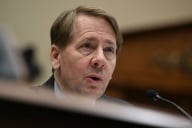You have /5 articles left.
Sign up for a free account or log in.

Lawrence University
In 2014, Lawrence University announced a plan to join the full-need colleges -- those that provide financial aid to cover all tuition and fees for admitted students with “demonstrated financial need.”
The space is dominated by the wealthiest private colleges. Only 65 institutions over all can make the claim.
So the president of Lawrence, Mark Burstein, launched a campaign to meet full need if Lawrence raised $85 million in endowed scholarship funds. The Full Speed to Full Need campaign was a hit, widely embraced by students and alumni -- and an anonymous donor who initially gave $25 million and later kicked in another $5 million. In 2018, Lawrence officials told the story of their commitment to meeting full need as soon as they raised enough money.
Last week, Lawrence announced that it has completed its seven-year fundraising campaign (of which Full Speed to Full Need was a part), raising $232.6 million. The original goal was $220 million.
Not only did the university exceed its total goal for the campaign, it exceeded its goal for full need. Burstein said that the campaign final for meeting full need was $91 million, plus an additional $5 million that isn't part of the campaign.
In fact the university announced this in the campaign summary: "In addition to scholarship support from Lawrence and contributions from their families, our students finance their education through student loans and wages earned from employment. Still, these financial resources are not enough, and students may require more loans to fund fully their educations at Lawrence. Jumpstarted in 2014 by a historic matching challenge totaling $30 million, Full Speed to Full Need is a bold move to make Lawrence accessible and affordable by meeting the full demonstrated financial need of every student. Increased financial aid will help our students graduate with less debt, increase the college’s four-year graduation rate, allow Lawrentians more time to focus on academics and more fully engage in the Lawrence experience. The initial gift and the response from the Lawrence community has been nothing less than a game changer. Approximately 60 percent of Lawrentians receive need-based financial aid; the average need is $26,000 annually per student (for domestic students applying for aid). Lawrence has been able to close the financial aid gap for a growing number of students."
But if you were expecting that Lawrence was also going to announce it was shifting to meeting full need, you'll need to wait a little longer.
Burstein insisted that Lawrence is still committed to meeting full need. But he said several things happened that increased the cost beyond the $91 million that Lawrence raised for the task.
Some of the changes were done to Lawrence (and other colleges). The federal Perkins Loan program ended -- costing Lawrence families with financial need $1 million a year.
Some of the changes were decisions Lawrence made. For example, it said that financial aid would apply to students who study abroad (a sizable number do when there is not a pandemic going on).
How much would it cost Lawrence to meet full need now? Burstein said the university decided to finish the capital campaign first and that it will now figure that out. He said that it would be an amount that Lawrence could achieve.
"We really didn't switch" away from the goal, he said.
He also said Lawrence had made real progress in limiting the amount of need it doesn't cover. In 2012, unmet need was over $5,000 per student with unmet need. Now it is less than $2,500.
The number of students whose need is not met is now about 100, down 5 to 7 percent since the campaign started. (Total enrollment is about 1,500.)
"This still is a central focus for us," he said. The message "resonated" with donors, and Lawrence will continue to try. "That was our aspirational goal," Burstein said.








